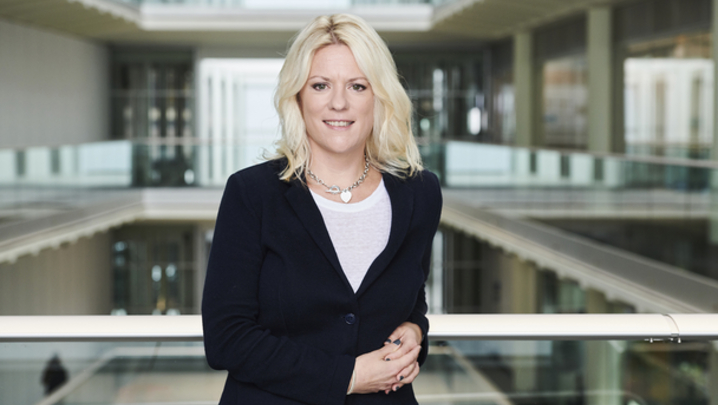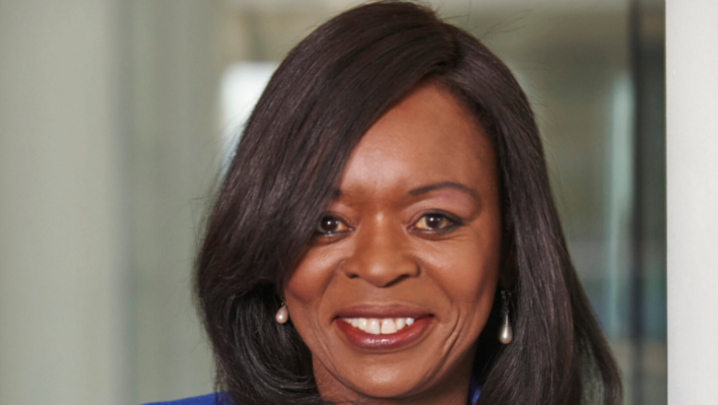Current affairs audiences are increasingly going online, posing a serious threat to the business of TV news providers
The uneasy relationship between traditional TV news organisations and big tech was explored in this session. To start the discussion, the session Chair, Sky News presenter Barbara Serra, heard a warning from Canada via video, where the Online News Act passed last year tried to force the likes of Meta and Google to pay news companies for using their content online.
Professor Aengus Bridgman from McGill University told RTS delegates that a Government-backed attempt to get tech outfits to compensate news providers had backfired. “The idea was to support local journalism,” said Bridgman. “Google agreed to pay $100m but Meta decided to cut all news from its flagship social media platforms, Facebook and Instagram.
“This has had a huge impact on the Canadian news industry because there was a 43% drop in news engagement across social media platforms. On Facebook and Instagram, it was about 90%. We estimated this amounted to a million fewer views a day to original reporting,” Bridgman said.
Was there a lesson here for UK news organisations? Bridgman replied: “When news providers have a mediated relationship with their audiences on social media via their algorithms, they are very vulnerable to decisions by Meta and the political classes.
“For news providers, there is a need to cultivate a one-to-one relationship with audiences.”
Should regulators act to protect news providers? Madhav Chinnappa, from Human Native AI, said there was a series of questions to be asked before regulatory intervention: What’s the problem you’re trying to address? Is the mechanism you’re using appropriate? And does it deliver the desired outcomes?
He added: “The problem we’re all trying to address is that there’s a market sustainability problem in news.”
As an aside, Serra revealed that Meta had been invited to appear on the panel but had declined.
Rachel Corp, CEO of ITN, said the theme of the convention was audiences, and the Canadian experience showed they had lost out. “They’re not getting that breadth of content they used to. When it comes to regulation in the UK, there are things to watch… Ofcom’s recent research showed that UK audiences value trusted, impartial PSB journalism, which needs protecting.” Corp added: “The discussion over sustainable funding is a lot bigger than trying to get tech to pay for certain bits of content on certain platforms.
"People are going down a rabbit hole where they're unable to spot fake news"
“At ITN, we welcome the Media Act and the idea of what prominence is going to look like for PSBs. We’ve innovated and taken news to where our audiences are – during the election, across all our services, we saw a lot of content on TikTok and YouTube.
“We can do that because we have the relative stability of contracts with broadcasters. We need to hold on to that and know that in the next 10 years we can keep up that level of quality journalism, even as the business models of our clients change.”
Ofcom CEO Melanie Dawes said the regulator’s latest news consumption survey showed a tipping point in how people watch news; 71% of adults said they access news online. She said: “Only a year ago, 75% of adults said they got their news from TV regulated by Ofcom. That has now fallen to 70%, and it’s lower than social media. For young people, it’s already less than half because they’re ahead of the overall trend.”
Online news may be in the ascendant, yet most people, including young people, don’t trust what they read or watch on social media. Dawes said: “People are choosing to spend their time on a more diverse range of platforms than ever before. Our research shows that, if you do get your news from social media, you’re more likely to go down a rabbit hole of being unable to spot fake news and not seeing a range of different opinions.
“Your own opinion is played back to you all the time. That starts to be a concern for our democracy.”
Where does YouTube stand on all this? “News really matters to YouTube,” said Iain Bundred, representing the company. “It matters to us as a business, but most of all it matters to our audiences. The core of that is the public service ecosystem, which is critical to trust in British content and quality journalism that we want on our platform. When there’s a breaking story, it’s high-quality journalists (pointing to Corp) like yours who are reporting quickly and putting out the most accurate information.”
This was all well and good, said the ITN CEO, but there remained a lack of transparency. “Yes, on a big [news] day, it’s brilliant to see our content getting to the top of what’s trending on YouTube, but that’s one day, and we don’t necessarily know how it gets there on another day.
“Another issue is that our television content must comply with Ofcom standards. We don’t have to do that for digital content, but we chose to…

“For example, we have found that some of our content on difficult stories, such as some of the Channel 4 News reporting from Gaza containing some very harrowing eyewitness reporting, fell foul of the age rating because you have to be over 18 to watch it.”
For ITN, the positive point is that the news organisation and YouTube are talking – unlike some other digital platforms “where our content just disappears”. An example was some reporting on mpox that “disappeared on TikTok”. At the end of the day, it’s users who suffer, said Corp.
Bundred agreed that YouTube had to get age-appropriate experiences right. Regarding transparency, trending only told you so much, he noted. “It’s indicative rather than following the audience’s journey.” A key factor was sharing data with the likes of ITN so that both parties understood what content was working.
YouTube data showed which pockets of the UK were watching a particular video and if they completed their viewing of the clip. “Hopefully, that can feed back into the editorial loop,” Bundred said. “Of course, we can always do more but it’s important to remind people here just how much data is there.”
Corp urged YouTube to pass on its good practice to other platforms.
Dawes said that, under the Online Safety Act, big online platforms are obliged to say how they deal with “content of democratic importance”. The Ofcom CEO stressed: “Transparency is so important. Until now, you’ve had global community guidelines. We now have UK and European laws…
“This stuff is complex. On one level, you have a regulated product that is fine to show before the watershed. Tiny children are not going to be watching Channel 4 News unsupervised by their parents. (But) they may well be watching YouTube on an iPad unsupervised.”
Did ITN feel vulnerable because news audiences are increasingly moving online? “I don’t know about vulnerable. I think we feel stretched because we have to put content everywhere,” replied Corp. “It comes back to making sure that collectively - we, regulators and the Government – get the whole PSB landscape right.
“That is what will give us seven more decades of important journalism. If we get that right, I’m optimistic.”
Session Ten: ‘How Safe is Our News?’ Barbara Serra, Sky News Presenter, interviewed Iain Bundred, Head of Public Policy for UK and Northern Europe, YouTube, Madhav Chinnappa, VP, Partnerships, Human Native AI, Rachel Corp, CEO, ITN, and Melanie Dawes, CEO, Ofcom. The producer was Diana Muir. Report by Steve Clarke.







